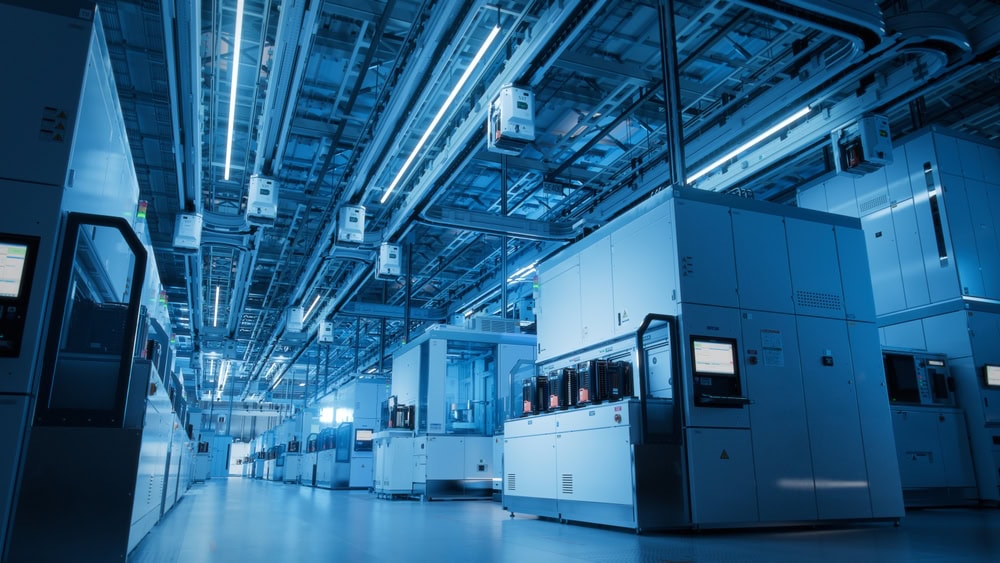Manufacturing Overhead: Definition, Cost Types, and Management

Manufacturing overhead includes all the indirect costs associated with the manufacturing process, which are not directly tied to producing a specific product. By grasping the concept of MOH, businesses can achieve more accurate cost assessments and better financial management.
This article will give a detailed overview of manufacturing overhead, its parts, and how it affects product costs.
What is Manufacturing Overhead?
Manufacturing overhead, also known as MOH, encompasses all the indirect costs related to the manufacturing process. These costs can’t be directly linked to specific products but are essential for the manufacturing process.
MOH includes expenses such as indirect labor, indirect materials, utilities, and depreciation of equipment.
Indirect costs are essential for manufacturing but do not directly create a product. Generally Accepted Accounting Principles (GAAP) require including these costs to determine the true cost of production.
By factoring in MOH, businesses can better understand their production expenses.
Types of Manufacturing Overhead Costs
You can break down manufacturing overhead costs into several categories, each contributing to the overall production environment.
Indirect Materials
Indirect materials are items that support the production process but do not become part of the final product. Examples include lubricants for machines, cleaning supplies, and tools used in manufacturing. These materials are essential for maintaining the efficiency and functionality of the production process.
Indirect Labor
Indirect labor includes labor costs that don’t directly link to specific goods but are necessary for overall operations. It includes salaries for factory maintenance workers, supervisors, and quality control staff.
Indirect labor ensures the smooth running of the manufacturing facility and supports the direct labor force.
Utilities
Utilities like electricity, water, and gas are crucial for maintaining the production environment. These costs are not directly allocable to specific products but are necessary for powering machines, lighting the facility, and maintaining a suitable working environment.
Effective management of utility costs can significantly impact overall production expenses.
Depreciation and Maintenance
Depreciation and maintenance of manufacturing equipment and facilities are also part of manufacturing overhead.
Depreciation accounts for the gradual loss of value of equipment over time, while maintenance costs ensure that machinery and facilities remain in good working condition. Both are essential for sustaining operational efficiency and productivity.
Factory Rent and Property Taxes
Factory rent and property taxes are significant components of manufacturing overhead. These costs are necessary for providing a physical space where manufacturing activities take place. Pay rent and property taxes regardless of production levels, which makes them fixed overhead costs.
Insurance
Insurance costs safeguard the manufacturing facility, equipment, and inventory from risks like fire, theft, and natural disasters. These costs are essential for safeguarding the business’s assets and ensuring continuous operations in case of unforeseen events.
Office Supplies
Office supplies used within the manufacturing plant, such as paper, pens, and administrative materials, also fall under manufacturing overhead. These supplies, though not directly involved in production, support the overall operations and administrative functions within the facility.
Companies can get a better understanding of their total manufacturing expenses by accounting for indirect materials, indirect labor, utilities, and depreciation. Proper management of manufacturing overhead leads to more accurate budgeting and improved financial performance.
Calculating Manufacturing Overhead
To calculate manufacturing overhead, businesses use a manufacturing overhead formula involving an overhead absorption rate, which applies overhead costs to products based on a cost driver, such as labor hours or machine hours.

Image Credit: Shutterstock.com/PeopleImages.com – Yuri A
This method ensures that all indirect costs are fairly distributed across products, providing an accurate picture of production expenses. Here’s a detailed step-by-step guide:
Identify Total Overhead Costs
The first step is to gather all indirect costs associated with the manufacturing process. These include, but are not limited to:
- Indirect Materials: Items that contribute to production but are not part of the final product, such as lubricants and cleaning supplies.
- Indirect Labor: Labor costs not directly linked to the production of specific goods, such as factory maintenance workers, supervisors, and quality control staff.
- Utilities: Costs for electricity, water, and other utilities essential for maintaining the production environment.
- Depreciation and Maintenance: Depreciation of manufacturing equipment and facilities and maintenance costs to keep equipment running efficiently.
Choose a Cost Driver
After identifying the total overhead costs, the next step is to select a cost driver. It is the basis for applying overhead costs to products. Common cost drivers include:
- Labor Hours: Total hours worked by employees directly involved in production.
- Machine Hours: Total hours that machines operate during the manufacturing process.
Choosing an appropriate cost driver is important, as it should accurately reflect the relationship between overhead costs and production activities.
Calculate the Overhead Absorption Rate
Calculate the overhead absorption rate by dividing the total overhead costs by the chosen cost driver. This rate helps distribute the overhead costs evenly across products.
For example, if the total manufacturing overhead cost is $100,000 and the total labor hours are 10,000, the calculation for the overhead absorption rate is:
Overhead Absorption Rate = Total Overhead Costs / Total Labor Hours=100,000 / 10,000 = 10
It means that the overhead absorption rate is $10 per labor hour.
Apply Overhead to Products
After determining the overhead absorption rate, apply it to products based on the actual amount of the cost driver used.
For instance, if a product requires 5 labor hours, calculate the manufacturing overhead cost allocated to that product by multiplying the overhead absorption rate by the number of labor hours:
Overhead Cost = Overhead Absorption Rate × Labor Hours Used = 10 × 5 = 50
Thus, the overhead cost assigned to this product is $50.
By following these steps, businesses can accurately assign manufacturing overhead costs to their products, ensuring a precise understanding of production expenses. This method helps not only with better budgeting and cost control but also with setting competitive pricing strategies.
Managing Manufacturing Overhead Costs
Effective strategies can help control these manufacturing costs, ensuring better financial performance and competitiveness. Here are some key approaches:
- Efficient Resource Utilization: Optimize the use of materials and labor to reduce waste and improve productivity. Careful planning and monitoring of resources ensure their effective use, minimizing excess and inefficiency.
- Investment in Modern Technology: Upgrade equipment and technology to enhance efficiency and reduce maintenance costs. Advanced machinery and automation can increase production speed and precision, leading to lower overhead costs in the long run.
- Regular Reviews of Overhead Costs: Conduct periodic reviews of overhead expenses to identify and address cost-saving opportunities. Regularly analyze expenses to identify areas where you can reduce costs without sacrificing quality.
- Energy Management: Implement energy-saving measures to lower utility costs, such as using energy-efficient lighting and equipment. Simple changes, like upgrading to LED lighting or investing in energy-efficient machinery, can significantly reduce utility expenses.
- Training and Development: Invest in employee training to improve skills and productivity, which reduces the likelihood of errors and rework. Well-trained employees work more efficiently and make fewer costly mistakes.
- Lean Manufacturing Practices: Adopt lean manufacturing principles to eliminate waste and streamline processes. Techniques such as Just-In-Time (JIT) production and continuous improvement can help reduce excess inventory and enhance production efficiency.
By implementing these strategies, businesses can better manage their manufacturing overhead costs, leading to improved profitability and a stronger competitive position in the market.
Challenges in Managing Manufacturing Overhead
Managing manufacturing overhead can be challenging due to several factors. Fluctuations in utility prices, such as electricity and water, can significantly impact overhead costs. These fluctuations are often unpredictable, making it difficult for businesses to maintain consistent budget forecasts.
Unexpected maintenance costs for manufacturing equipment can also disrupt financial planning. Machinery breakdowns or the need for sudden repairs can lead to unplanned expenses, increasing the overall manufacturing overhead. Regular maintenance schedules can help, but unforeseen issues can still arise.

Image Credit: Shutterstock.com/panuwat phimpha
Changes in regulatory requirements present another challenge. New regulations may force businesses to invest in updated equipment or adopt new practices, raising overhead costs. While compliance is crucial, it can strain financial resources, particularly for smaller businesses.
Effective Strategies for Managing Manufacturing Overhead
Despite these challenges, businesses can use effective strategies to manage manufacturing overhead:
- Efficient Resource Utilization: Optimize using materials and labor to reduce waste and improve productivity.
- Investment in Modern Technology: Upgrade equipment and technology to enhance efficiency and reduce maintenance costs.
- Regular Reviews of Overhead Costs: Conduct periodic reviews of overhead expenses to identify and address cost-saving opportunities.
- Energy Management: Implement energy-saving measures to lower utility costs, such as using energy-efficient lighting and equipment.
- Training and Development: Invest in employee training to enhance skills and productivity, which helps reduce errors and rework.
- Lean Manufacturing Practices: Adopt lean manufacturing principles to eliminate waste and streamline processes.
These techniques help businesses control overhead costs, leading to better financial performance and competitiveness.
The Importance of Managing Manufacturing Overhead
Understanding and managing manufacturing overhead is crucial for businesses to accurately determine production costs and improve budgeting. Companies can enhance their financial health and operational efficiency by calculating overhead accurately and employing effective cost-management strategies.
With the right approach and tools, managing manufacturing overhead can lead to significant benefits for manufacturing operations. By staying proactive and adopting efficient practices, businesses can achieve more accurate cost assessments, better budgeting, and improved overall financial performance.
